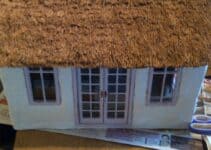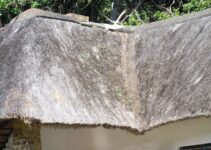Whilst there will always be a variety of tools used by thatchers and a variety of names given to their tools between thatchers, there are a common group of tools that nearly all will rely on to create a high quality and long-lasting finished thatched roof.
Many of these thatching tools have not differed over the centuries.
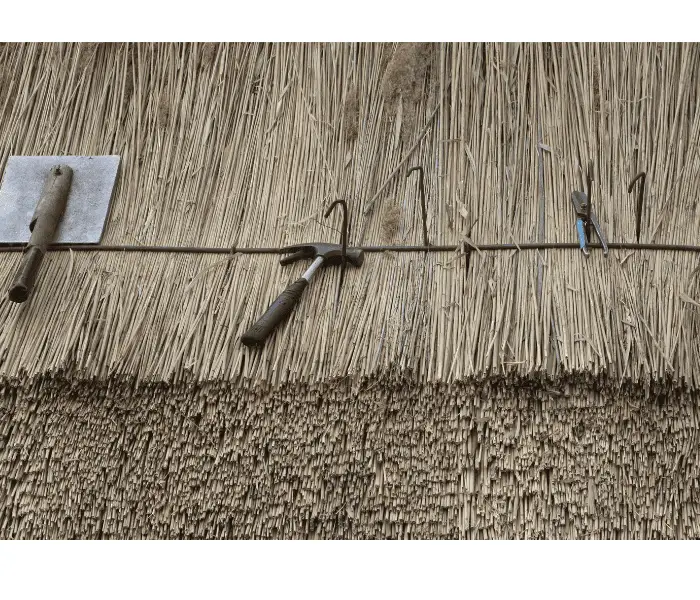
What Tools Does A Thatcher Use?
Ladder
Needless to say, when working on a roof, it is critical that the thatcher can access it. Whereas now a thatcher can rely on an extendable metal ladder, this was not always the case.
Historically, thatchers would have to rely on 6-9m full-length pole ladders, often with sides created from the trunk of a hollowed-out tall tree to create strength.
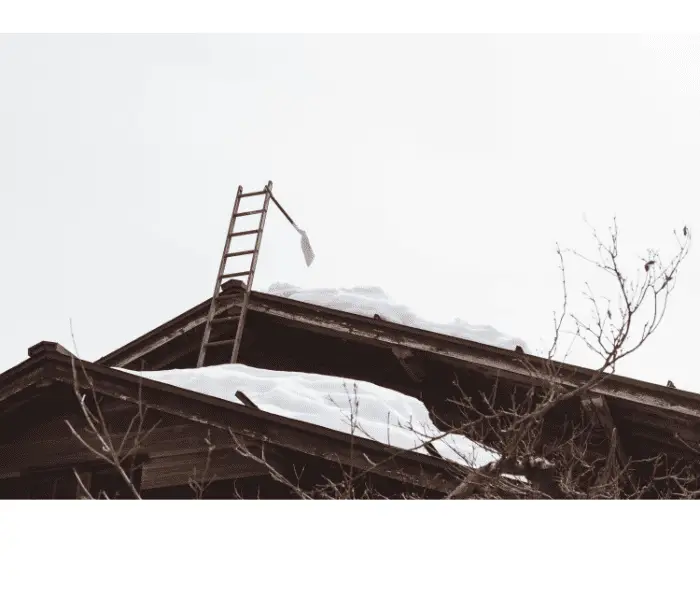
Hanging Ladder
In bygone times, if the ladder did not have enough length to reach the apex of the roof, the thatcher would utilise a hanging ladder. This was a ladder with metal spikes at the top which was used to attach to the thatched roof and extend the range within which the thatcher could work. These are still used by some thatchers.
Cradle
Similar to a hanging ladder, cradles are finished with metal spikes so as to be able to attach to the roof. They can be used to store bundles of straw as the raw materials, so they are in close proximity to the area of the roof that the thatcher is working on.
The traditional design for a cradle was a curved piece of wood fixed to a wooden plank.
Kneelers/Knee Pads
Although not unique to a thatcher, when undertaking such laborious work, it is vital that as the thatcher will spend a prolonged period of time resting weight onto the knees that they are adequately padded against the ladder. These perform that task.
Pin
A Pin or ‘Reeding Pin’ is between 15-20 inches long depending on the required thickness of the layer of thatch and has a sharp fixed point.
Pins are used to hold down the thatching whilst work is ongoing. Often they have a hole at the top point to be used as a thatching needle. Whereas once these may have been made of wood, now they may be made of metal depending on the thatcher.
Brush
A brush is used to ‘brush’ the final work to ensure a smooth external finish without lumps or bulges.
Mallet
Mallets are used to hammer in spars to the roof. Spars are a key element of thatching and are used as ‘staples’ to keep the thatch in place when a layer is completed.
Knife
The knife is used to cut down bundles of reed or remove the string from a bundle. They can also be utilised to implement patterns or to remove excess length from the straw or any other number of small useful tasks.
Shears
Shears are used to trim the edges of the reed and remove length from the edges.
Twister
A twister is used to apply tension and to ‘twist’ any wires (now predominantly steel) to the screws to create added security.
Spar Hook
This is a sharp blade used to create and fashion thatching spars which are used to fix layers of thatch in place. The blade length and distinctive curved end differ between individual bespoke blades.
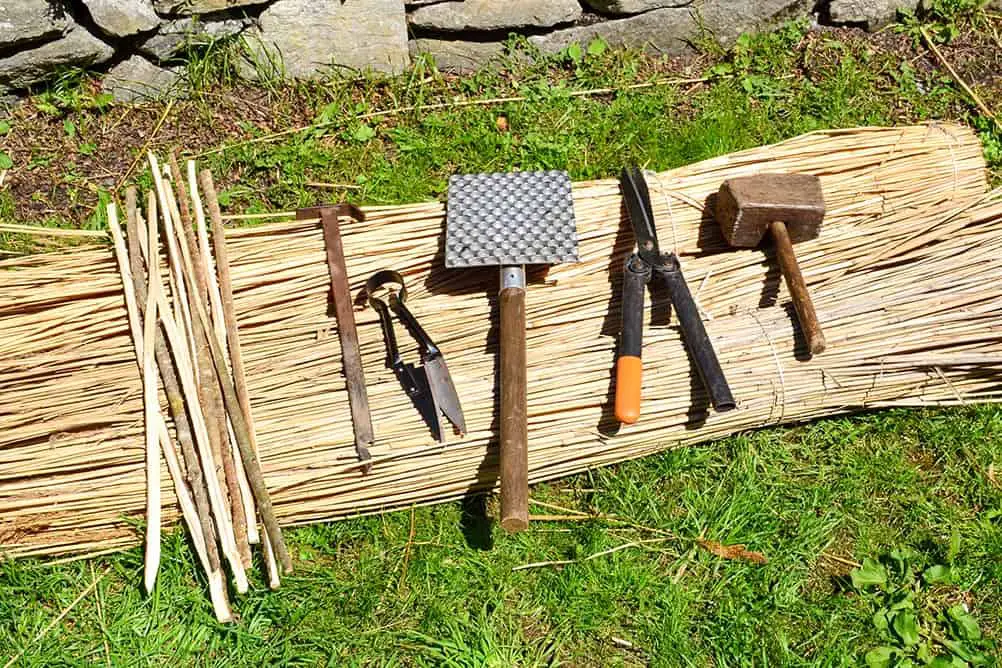
What Is A Leggett In Thatching?
An iconic tool of crucial importance in traditional thatching is a leggett. It is important to note that this tool was colloquially given different names relative to the region of the thatcher, with some referring to it as a ‘bat’ or a ‘biddle’.
The leggett thatching tool typically resembles a large handheld comb.
As the leggett does not have clearly defined dimensions there are differences in sizes between tools. Typically, the leggett is a handheld wooden tool around 10 inches long and 8 inches wide.
On the broad face of the leggett, are grooves or teeth and the leggett thatching tool is fitted with a long-arched handle to ensure that the thatcher does not touch the roof surface when the tool is in motion.
Thatching Leggett
The thatching leggett is used to pat the thatched straw into the desired position from the base and apply an even finish to the straw that has been arranged onto the roof. This ‘knocking’ or ‘batting’ notion was historically key to ensuring the best results.
A thatching leggett often features a metal-edged finish if the thatcher is working with water reeds which quickly wear out the wood.
Elevated horseshoe nail heads were often utilised as grooves to increase the durability of the tool. In addition to this, grooves were often added to the handle as a visual guide for set lengths to try to create a uniform finish across the length of the roof.
Traditional Thatching Tools
Tools would vary between thatchers and regions, depending on their thatching style, and usually, tools would be handmade by the thatcher to suit their bespoke needs.
Common to English thatchers were these tools: a leggett, a knife, a fork, rake needles, sheers, hooks, and a mallet.
Thatchers Tools – A Summary
As thatching has moved on from past times, so too has the practice and access to modern equipment and tools, although many of the fundamental pieces of equipment remain in a thatcher’s arsenal that have always been there.


